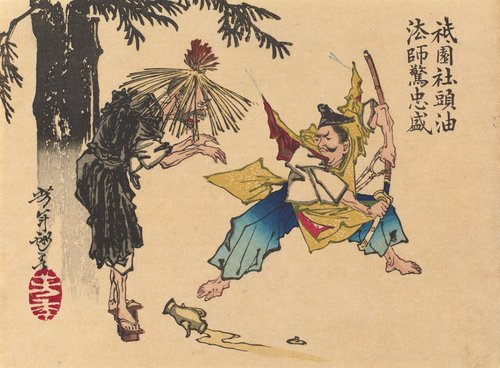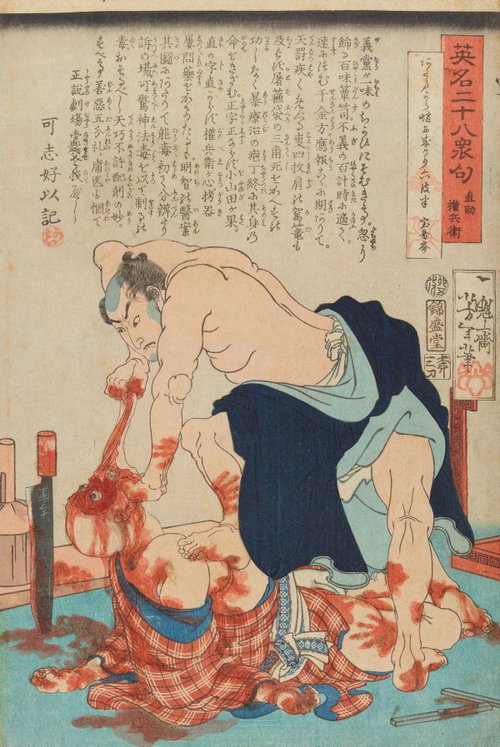-
Details
- Alternative title
- tsuki no katsura - Gobetsu
- Place where the work was made
-
Japan
- Period
- Meiji period 1868 - 1912 → Japan
- Date
- March 1886
- Media category
- Materials used
- colour woodblock; ōban
- Dimensions
- 39.0 x 26.0 cm
- Signature & date
Signed and dated.
- Credit
- Yasuko Myer Bequest Fund 2012
- Location
- Not on display
- Accession number
- 258.2012.26
- Copyright
- Artist information
-
Tsukioka Yoshitoshi
Works in the collection
- Share
-
-
About
According to Chinese legend, the Daoist adept Wu Gang (Gōbetsu in Japanese) used the magical powers of seeds from the giant cassia trees on the moon for evil purposes. His Sisyphus-like punishment from the gods was to chop off the branches of the cassia trees on the moon, which would immediately grow back again. In this print Wu Gang wears Chinese clothes, combining an immortal’s robes with a peasant’s straw hat, and carries a huge ceremonial axe. Instead of showing him suffering from the strenuous task, Yoshitoshi chose to show Wu Gang excited and proud of his new workplace, the bright moon above.
-
Places
Where the work was made
Japan
-
Exhibition history
Shown in 1 exhibition
Yoshitoshi: One Hundred Aspects of the Moon, Art Gallery of New South Wales, Sydney, 20 Aug 2016–20 Nov 2016
-
Bibliography
Referenced in 3 publications
-
Yuriko Iwakiri, Yoshitoshi Tsuki hyakushi (Yoshitoshi’s One hundred aspects of the moon), Tokyo, 2010. General reference; Another edition was reproduced
-
John Stevenson, Yoshitoshi's One hundred aspects of the moon, Seattle, 1992, (colour illus.). cat.no. 26; Another edition was reproduced
-
Chris UHLENBECK, Yoshitoshi: masterpieces from the Ed Freis collection, Leiden, 2011, 135-136. General reference; Another edition was reproduced
-




